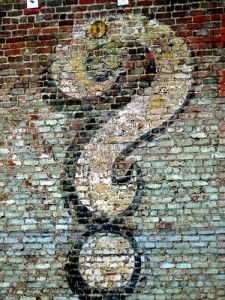What do people not like about the process of purchasing my product?
I’m a firm believer that better questions result in better ideas which lead to better innovations. So what are some of these killer questions? Over the years, I’ve collected a list of +75 questions that breakthrough the fog and help individuals and teams come up with killer ideas. One such question

I'm a firm believer that better questions result in better ideas which lead to better innovations. Over the years, I've collected a list of +75 questions that I use during the killer innovation workshops to help individuals and teams come up with better ideas.
So what are some of these killer questions? In the past, I've shared them as part of the podcast but many listeners found it hard to remember the questions or to write them down. So, I will share with you the questions that are in the card deck, one at a time and explain the background and example killer innovations based on the question. The order of the question has no specific meaning. It's just how they appear in the deck.
What do people not like about the process of purchasing my product?
We've all had bad buying experiences. Everything from retail help that is not helpful to the large corporation that makes it so hard to purchase you wonder how they stay in business. This is the touchpoint where the customer is making the decision and will pay you for whatever it is you are offering. Sounds easy, doesn't it? It's not…
I don't know about you, but the buying process for a car is more than painful. Why does it take so long to get through the process? One example of a company that changed the buying experience was Saturn.
In 1980, GM recognized its inferiority to the Japanese with respect to compact vehicles. GM gave the green light to Group 99, a skunkworks team that resulted in launching Saturn in 1985.
From the beginning, Saturn set out to break through the GM bureaucracy and
create “A different kind of company”. As the single-most defining characteristic of the new company, Saturn declared its sole focus would be people: customers, employees, communities. Saturn put significant resources into customer research and product development. The first Saturn cars were made “from scratch,” without any dependencies on GM parts or suppliers. The goal was to produce not only a high-quality vehicle but one known for safety and innovative features that would “wow” the customer.
Customers loved the innovations, such as dent resistant panels, the high-tech paint designed to resist oxidization and chipping, and safety features such as traction control, antilock brakes, and unparalleled body reinforcements.
The one innovation that shook the industry was how they changed the buying experience. Customers were overwhelmed by the fresh sales approach that included no-haggle pricing, a 30-day return policy, and no hassle from the sales associates. The noncommissioned associates spent as much time with each customer as they wished, even going on extended test drives. Absent were the typical high-pressure tactics so commonly used by automotive salespeople.
The crowning achievement occurred in 1995, as the 1,000,000th Saturn was delivered. That year, Saturn ranked number one on the J.D. Power and Associates Sales Satisfaction Index Study, achieving the highest score ever given by the organization. It would be the only automotive company ever to achieve the highest marks in all three categories ranked by the satisfaction index (salesperson performance, delivery activities, and initial product quality)
Since its sales peak in 1994, Saturn has seen its sales slide and its J.D. Power and Associates rating falling from the top to below the industry average.
So what happened? Saturn, like many companies that have early innovation success, rested on its laurels and become conservative (e.g. we've achieved so much .. let's not risk it). It didn't keep that same sense of urgency and passion it had when it started. Success breeds comfort and comfort leads to complacency.
What is it about the buying experience that your customers don't like?
Don't guess at the answer, get out there and ask them. And while you are at it, when was the last time you purchased your own product or service?
Phil McKinney Newsletter
Join the newsletter to receive the latest updates in your inbox.




